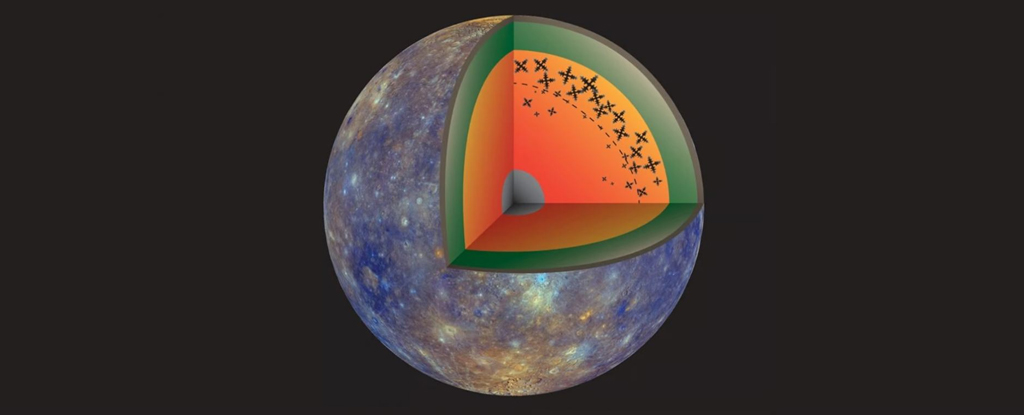Jupiter‘s largest moon, Ganymede, features a surprisingly strong magnetic field for its size. Tidal effects from Jupiter continually stretch and squeeze the moon, keeping its core warm and driving the magnetic field. But the exact geological processes occurring within the core are not fully understood.
Now, a new experimental study has put one of the leading models of core dynamics to the test: the formation of crystalized ‘iron snow’.
The iron snow theory is like a geological ‘weather model’ for a planetary core: it describes how iron cools and crystalizes near the upper edge of the core (where it meets the mantle), then falls inwards and melts back into the liquid centre of the planet.
Ganymede’s core, in other words, is a molten metal snowglobe, shaken and stirred by Jupiter’s gravity.
This cycle of rising and falling iron “creates motions in the liquid core and provides energy for generating a magnetic field,” the researchers behind the study write. “However, the key aspects of this regime remain largely unknown.”
So they designed an experiment to test some of those aspects.
Of course, scientists can’t just peer inside a planetary core, so the team took to the laboratory, where they used water ice as an analog for iron snow crystals.
The experiment consisted of a tank of water, cooled from below. A salty layer of water rested at the tank’s bottom, representing the planetary mantle (and from a practical standpoint, helped keep the ice crystals from getting stuck to the bottom). On top of the brine was a layer of fresh water, representing the planet’s liquid core. Ice crystals formed near the bottom of the tank, where the salty and fresh water mingled, then floated upwards and melted in the warmer liquid above.
In other words, the experiment was an upside-down simulation of iron snow, with the snowflakes drifting up instead of down.
This setup allowed the team to test the behavior of the crystals and their effect on the whole system.
Their findings were surprising. Instead of a steady flow of crystallization, rising, and melting, there were instead sporadic bouts of rapid activity, followed by periods of inactivity.
Why?
It appears that to trigger the crystallization process, the liquid needs to reach a supercooled state, below the temperature at which you would expect ice to solidify.
Once that supercooled temperature is reached, it releases a flurry of snowflakes, and then pauses until the temperature is once again low enough to release a new bout of crystals.
This sporadic and cyclical process has significant ramifications for a planet’s magnetic fields. Iron snow at Ganymede would occur intermittently, and be localized at different places throughout the core. The result would be a shifting and dancing magnetic field that strengthens, weakens, and changes shape over time.
Ganymede isn’t the only place in the Solar System where iron snow dominates the behavior of planetary cores. It is a plausible description of core behavior in all small planetary bodies, including our own Moon and Mercury, as well as Mars and large metallic asteroids.
In cases where magnetic fields are known to exist (like Mercury and Ganymede), it brings us one step closer to understanding the dynamics of those systems.
If you’re wondering, Earth’s core isn’t believed to be dominated by iron snow. The powerful pressure of gravity at the heart of our planet, along with a different composition of materials, means that metals in Earth’s core tend to solidify in the middle, then melt as they drift outwards, rather than snowing down from the mantle (though both processes might be present in some quantity, according to recent research).
This article was originally published by Universe Today. Read the original article.





